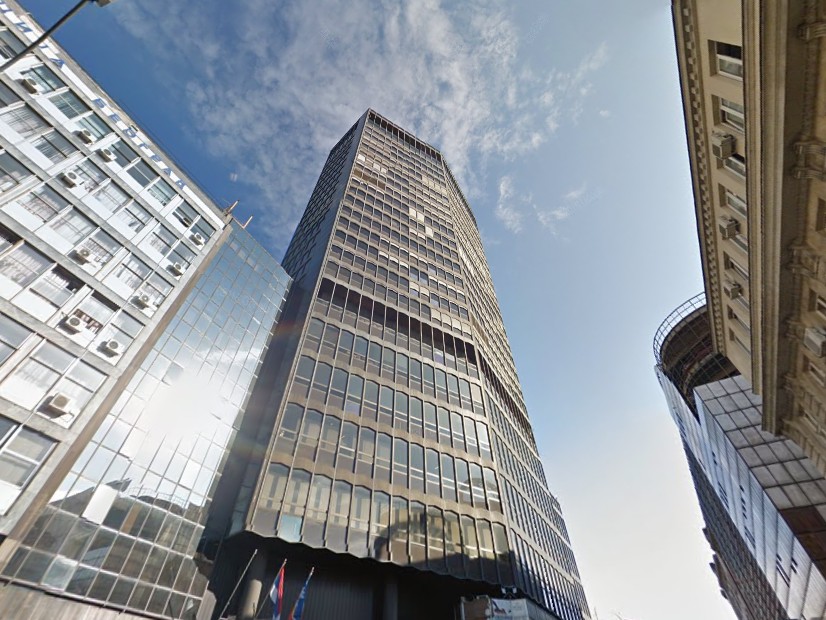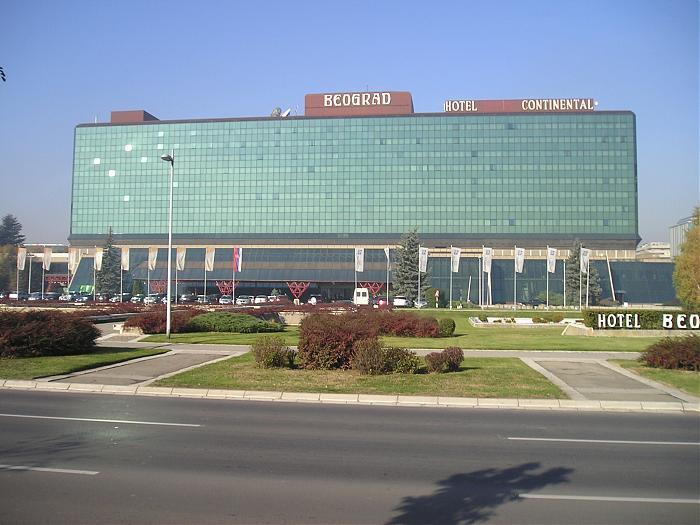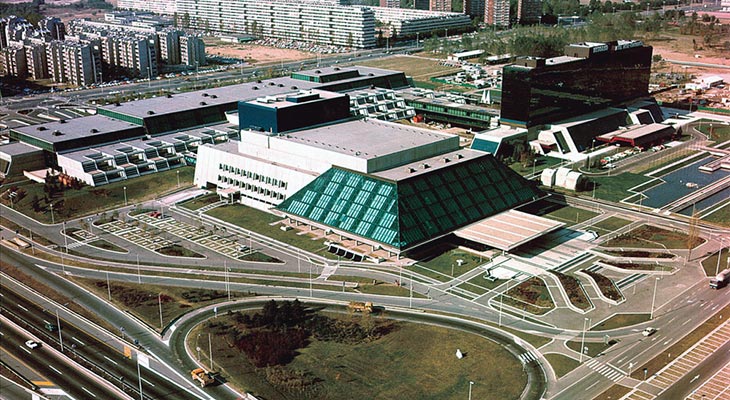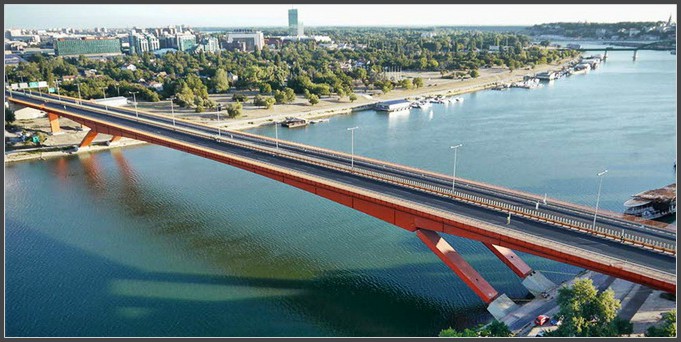Koristite zastareli preglednik. Možda se neće pravilno prikazivati ova ili druge veb stranice.
Trebalo bi da nadogradite ili koristite alternativni preglednik.
Trebalo bi da nadogradite ili koristite alternativni preglednik.
Фасаде / Fasade
- Začetnik teme Влада
- Datum pokretanja
spatiotecte
Professional
- Učlanjen(a)
- 09.02.2007.
- Poruke
- 16.263
- Pohvaljen
- 19.859
Pa fora je da pronadjete u kom trenutku se vidi a zaista ima Beograd na snimku.
С
Садко
Guest
[url=http://beobuild.rs/forum/viewtopic.php?p=697658#p697658:1h7o14cl je napisao(la):Otis.Driftwood » Суб Јан 11, 2020 11:18 pm[/url]":1h7o14cl][url=http://beobuild.rs/forum/viewtopic.php?p=697643#p697643:1h7o14cl je napisao(la):
Uf, kako su ugurali ovaj Luff
А није имао ни толико смисла за целину да дозида до нивоа суседних зграда, што не би био толико енорман издатак. :x
[url=http://beobuild.rs/forum/viewtopic.php?p=697695#p697695:3fachd8i je napisao(la):Садко » Ned Jan 12, 2020 2:23 am[/url]":3fachd8i][url=http://beobuild.rs/forum/viewtopic.php?p=697658#p697658:3fachd8i je napisao(la):Otis.Driftwood » Суб Јан 11, 2020 11:18 pm[/url]":3fachd8i][url=http://beobuild.rs/forum/viewtopic.php?p=697643#p697643:3fachd8i je napisao(la):
Uf, kako su ugurali ovaj Luff
А није имао ни толико смисла за целину да дозида до нивоа суседних зграда, што не би био толико енорман издатак. :x
Zanima me šta bi se desilo da je dozidao do nivoa susednih zgrada uzimajuću u obzir one (nelegalne) prozore i klime na susednoj zgradi.
Ventilator_BGD
Higher intermediate
- Učlanjen(a)
- 05.11.2007.
- Poruke
- 823
- Pohvaljen
- 1.291
koliko ovo agresivno minimalisticko luff ne odgovara ovo neznoj beloj fasadi.
zexland
Advanced
[url=http://beobuild.rs/forum/viewtopic.php?p=697666#p697666:2w7luxnd je napisao(la):spatiotecte » 11 Jan 2020 11:43 pm[/url]":2w7luxnd]Pa fora je da pronadjete u kom trenutku se vidi a zaista ima Beograd na snimku.
na 13.13
https://youtu.be/iAh_W9hZ1C4?t=793
spatiotecte
Professional
- Učlanjen(a)
- 09.02.2007.
- Poruke
- 16.263
- Pohvaljen
- 19.859
Bravo Zekse tako je, u jednom trenutku sam pomislio da neće niko naći. +1 za tebe :kk: 

And7rey
Advanced
- Učlanjen(a)
- 23.09.2015.
- Poruke
- 2.030
- Pohvaljen
- 3.741
Ne verujem da bi taj luff smeo da dogradi pošto je kuća verovatno pod zaštitom, a ako nije onda ima dobar primer kako se to može uraditi u istoj ulici malo dalje uzbrdo kod Rajićeve.
Pitam se zašto nisu hteli da urade zgrade levo i desno od luff-a, + kalkan. Sada te dve zgrade kvare utisak.
Inače jako me nervira što jedva ima starih slika iz tog dela Kralja Petra (od Uzun Mirkove pa prema dole) a interesovalo bi me kako su tu neke zgrade ranije izgledale. Jedna interesantna koju sam hteo da pokažem je ova:

Ovo je ista zgrada kao ova današnja, samo su je oljuštili i dogradili nove balkone. U pozadini se vidi stari hotel royal pre nego što je srušen.

Pitam se zašto nisu hteli da urade zgrade levo i desno od luff-a, + kalkan. Sada te dve zgrade kvare utisak.
Inače jako me nervira što jedva ima starih slika iz tog dela Kralja Petra (od Uzun Mirkove pa prema dole) a interesovalo bi me kako su tu neke zgrade ranije izgledale. Jedna interesantna koju sam hteo da pokažem je ova:

Ovo je ista zgrada kao ova današnja, samo su je oljuštili i dogradili nove balkone. U pozadini se vidi stari hotel royal pre nego što je srušen.

С
Садко
Guest
Тачно се види промена режима на основу изгледа зграда Београда, односно масакрирању његовог ткива.
Како оно беше објашњење - превише буржоаски? Мислим да је то била идеја водиља.
Како оно беше објашњење - превише буржоаски? Мислим да је то била идеја водиља.
spatiotecte
Professional
- Učlanjen(a)
- 09.02.2007.
- Poruke
- 16.263
- Pohvaljen
- 19.859
Retardirani komunisti unakazili toliko zgrada u Beogradu. Šta su oni znali o estetici kad su sišli sa brda.
spatiotecte
Professional
- Učlanjen(a)
- 09.02.2007.
- Poruke
- 16.263
- Pohvaljen
- 19.859
Mislim da ova zgrada nije srušena već da joj je fasada prepravljena.
Johnest_Hon
Higher intermediate
- Učlanjen(a)
- 16.10.2010.
- Poruke
- 1.881
- Pohvaljen
- 2.632
Ova Luff kućica je primer kako je i predratni investitorski urbanizam postojao, samo u manjoj meri i lepšoj 
Bila bi dobra stvar da u okviru beobuilda ubacimo mapu beograda, pa na klik zgrade da izadje njena predratna fotografija. Za to treba prvo baza zgrada po adresi, milion nekih starih slika su iskocike u poslednje vreme, neke vidim prvi put, iako pratim tematiku.
VeniVidiVici
Higher intermediate
- Učlanjen(a)
- 07.08.2015.
- Poruke
- 1.332
- Pohvaljen
- 4.654
[url=http://beobuild.rs/forum/viewtopic.php?p=697846#p697846:38clatlj je napisao(la):spatiotecte » Sun Jan 12, 2020 5:51 pm[/url]":38clatlj]Retardirani komunisti unakazili toliko zgrada u Beogradu. Šta su oni znali o estetici kad su sišli sa brda.
A nisu ni nemci nakon rata bili mnogo bolji: https://de.wikipedia.org/wiki/Entstuckung (upotrebite Google Translate).
A evo i teksta, sa slikama o tom procesu uklanjanja dekorativnih elemenata sa fasada (naročito izraženo u Berlinu): https://www.reddit.com/r/Lost_Architect ... ess_where/
Ventilator_BGD
Higher intermediate
- Učlanjen(a)
- 05.11.2007.
- Poruke
- 823
- Pohvaljen
- 1.291
nisu komunisti uklanjali ukrase nego modernisti i postmodernisti, isti ovi sto i danas uklanjaju. Shvatite jos jednom, trockisti na zapadu trockisti na istoku, ista ekipa i dan danas svuda, to je americki dip stejt koji je unistio americke gradove i stvorio ovo: https://www.google.com/maps/@41.5011295 ... a=!3m1!1e3
Biti trockista je stanje uma, nevezano za drustveno politicki sistem, trockista je pojam liberala koji se logicno obracunava sa svakom religijom i tradicijom i vrednostima koje uz njih idu i stvara antitradiciju minimalizujuci tim procesom i arhitekturu i svodeci je na puku agresivnu funkcionalnost i minimalizam. Politika i arhitektura su neraskidivo povezani i jasni ko dan. Trockisticko stanje uma nije zapocelo sa titom vec sa kraljem, i jos se nije zavrsilo, trockisti vladaju srbijom danas. Ko od arhitekata danas ima odnos prema tradiciji i nasledju? Samo antiliberali, ako malo provrtite po glavi i pokusate da spoznate da znate nekog arhitektu udjite u njegov karakter i testirajte ga, videcete da se ovaj obrazac kod svakoga ponavlja.
Biti trockista je stanje uma, nevezano za drustveno politicki sistem, trockista je pojam liberala koji se logicno obracunava sa svakom religijom i tradicijom i vrednostima koje uz njih idu i stvara antitradiciju minimalizujuci tim procesom i arhitekturu i svodeci je na puku agresivnu funkcionalnost i minimalizam. Politika i arhitektura su neraskidivo povezani i jasni ko dan. Trockisticko stanje uma nije zapocelo sa titom vec sa kraljem, i jos se nije zavrsilo, trockisti vladaju srbijom danas. Ko od arhitekata danas ima odnos prema tradiciji i nasledju? Samo antiliberali, ako malo provrtite po glavi i pokusate da spoznate da znate nekog arhitektu udjite u njegov karakter i testirajte ga, videcete da se ovaj obrazac kod svakoga ponavlja.
Veliki Vracar
Higher intermediate
- Učlanjen(a)
- 12.11.2009.
- Poruke
- 1.808
- Pohvaljen
- 4.045
[url=http://beobuild.rs/forum/viewtopic.php?p=697846#p697846:o57sr78c je napisao(la):spatiotecte » 12 Jan 2020 04:51 pm[/url]":o57sr78c]Retardirani komunisti unakazili toliko zgrada u Beogradu. Šta su oni znali o estetici kad su sišli sa brda.
Сишли са брда...









и тако до прекосутра...
Veliki Vracar
Higher intermediate
- Učlanjen(a)
- 12.11.2009.
- Poruke
- 1.808
- Pohvaljen
- 4.045
Неки то мисле и пред огледалом. Шта да им радим.
Evo sta kaze Jacques Herzog na te stvari prevedeno sa Nemackog:
Lukas Gruntz (Architektur Basel): You could say that architecture is primarily a social commitment. Would you agree to that?
Jacques Herzog: “That would be the wish that it should be understood that way. The fact is that building is also an industry and a human necessity. But actually, if you understand architecture not just as a building but also as architecture, then you can and should see it in the context of the society for which it is built. In our view, an enlightened and democratic society, architecture must be anchored in the population, ideally emerging from the needs of the population. This explains the success of our buildings, especially those that affect the public, such as museums or stadiums. But there are other concepts of architecture - in dictatorships, monarchies or other non-democratic systems. Architecture is rather determined from above, with power and also to express this power in architecture and urban planning. ”
What does that mean?
"St. Petersburg, Venice, Rome or Paris in the 19th century arose in such power relationships. Often with ruthless consistency, when you think of Haussmann's boulevards in Paris. However, the result was unprecedented, incomparable beauty, which still attracts and inspires people more than the cities created today, which emerge from the bottom-up culture of our democracies. Tourists from all over the world always look at the same beautiful cities of the past. Perhaps there is more beauty in the non-democratic context because the context is more extreme, more radical. ”
“Many buildings are simply produced. Then it is
just the way it is. "
If I take up your thoughts, the question arises whether our direct democracy is a good breeding ground for architecture at all?
“Many projects around the world are not what we want. Many buildings are simply produced. Then it's just the way it is. After all, it is always possible to create places and buildings that are exceptions: they were also created in a democratic society, but with a short and direct route between the architect and the client. Consensus in a group, but without a referendum. In this way, questions can be discussed on a small scale and decisions made more directly. We have experienced this ourselves, for example at the Tate Modern in London, a non-governmental museum, or the private Schaulager in Münchenstein - in both cases with an exceptionally committed and intelligent client. The Fondation Beyeler in Riehen is also a good example, where the architecture was created in close collaboration between Ernst Beyeler and architect Renzo Piano. One could speak of a kind of complicity between the client and the architect, where everything is negotiated much more directly. And yet always embedded in the existing democratic structures of the zone regulations and building laws. ”
Lukas Gruntz (Architektur Basel): You could say that architecture is primarily a social commitment. Would you agree to that?
Jacques Herzog: “That would be the wish that it should be understood that way. The fact is that building is also an industry and a human necessity. But actually, if you understand architecture not just as a building but also as architecture, then you can and should see it in the context of the society for which it is built. In our view, an enlightened and democratic society, architecture must be anchored in the population, ideally emerging from the needs of the population. This explains the success of our buildings, especially those that affect the public, such as museums or stadiums. But there are other concepts of architecture - in dictatorships, monarchies or other non-democratic systems. Architecture is rather determined from above, with power and also to express this power in architecture and urban planning. ”
What does that mean?
"St. Petersburg, Venice, Rome or Paris in the 19th century arose in such power relationships. Often with ruthless consistency, when you think of Haussmann's boulevards in Paris. However, the result was unprecedented, incomparable beauty, which still attracts and inspires people more than the cities created today, which emerge from the bottom-up culture of our democracies. Tourists from all over the world always look at the same beautiful cities of the past. Perhaps there is more beauty in the non-democratic context because the context is more extreme, more radical. ”
“Many buildings are simply produced. Then it is
just the way it is. "
If I take up your thoughts, the question arises whether our direct democracy is a good breeding ground for architecture at all?
“Many projects around the world are not what we want. Many buildings are simply produced. Then it's just the way it is. After all, it is always possible to create places and buildings that are exceptions: they were also created in a democratic society, but with a short and direct route between the architect and the client. Consensus in a group, but without a referendum. In this way, questions can be discussed on a small scale and decisions made more directly. We have experienced this ourselves, for example at the Tate Modern in London, a non-governmental museum, or the private Schaulager in Münchenstein - in both cases with an exceptionally committed and intelligent client. The Fondation Beyeler in Riehen is also a good example, where the architecture was created in close collaboration between Ernst Beyeler and architect Renzo Piano. One could speak of a kind of complicity between the client and the architect, where everything is negotiated much more directly. And yet always embedded in the existing democratic structures of the zone regulations and building laws. ”
Koniljo
Advanced
- Učlanjen(a)
- 14.03.2019.
- Poruke
- 2.057
- Pohvaljen
- 7.259
Kako god bilo, komunisti su napravili dosta dobrih stvari u gradu. Naravno da je neoprostivo da se zgrada pošte, biblioteke i druge nisu obnovile. Imam veoma loše mišljenje o njima u političkom smislu. Čini mi se da ti čuveni "Beograđani" iz kruga dvojke uopšte ne vole Beograd, oni više vole da prkose Srbiji. Ako uzmemo u obzir da su to potomci crnogorskih komunista (možda i "zelenaša"), onda ništa ne čudi. Politički revanšizam i to ispoljen na najbrutalniji način. Nisam srećan što je "zamorče" bio Beograd. Posledice su vidljive i danas, jer da se ne lažemo, mi Srbi smo prošli najgore. Sada kada formalno više nema "crvene kuge", nama niko ne brani da obnovimo te zgrade. Mislim da je krajnje vreme da se tako nešto učini.
С
Садко
Guest
Ево, зашто за почетак ми људи са Форума не бисмо покренули онлајн петицију за обнову фасаде Поште? Верујем да би свако повукао ”своје људе” а сама петиција би могла бити добро испраћена.
Дакле, не да чекамо арапског инвеститора коме ће то бити услов за куповину зграде (Боже помози на шта би то личило), него да ми сами обновимо. Ако може да се зида палата Обреновића у Такову, може и да се обнови најважнија зграда и симбол предратног Београда.
Дакле, не да чекамо арапског инвеститора коме ће то бити услов за куповину зграде (Боже помози на шта би то личило), него да ми сами обновимо. Ако може да се зида палата Обреновића у Такову, може и да се обнови најважнија зграда и симбол предратног Београда.
Preporučite:




